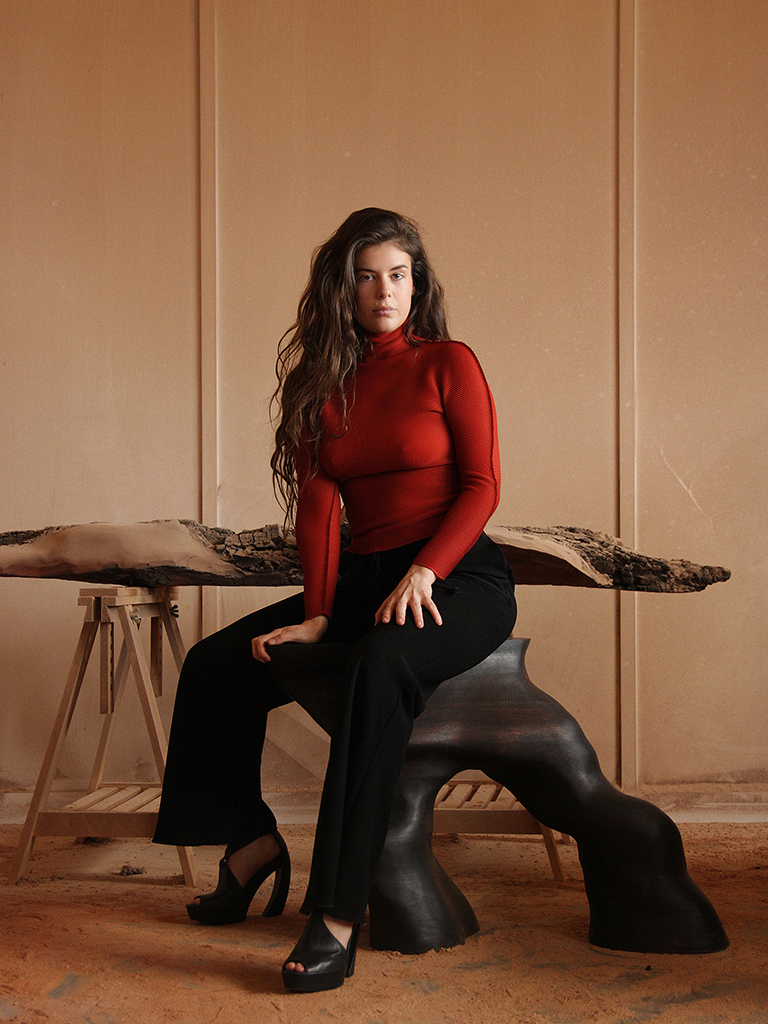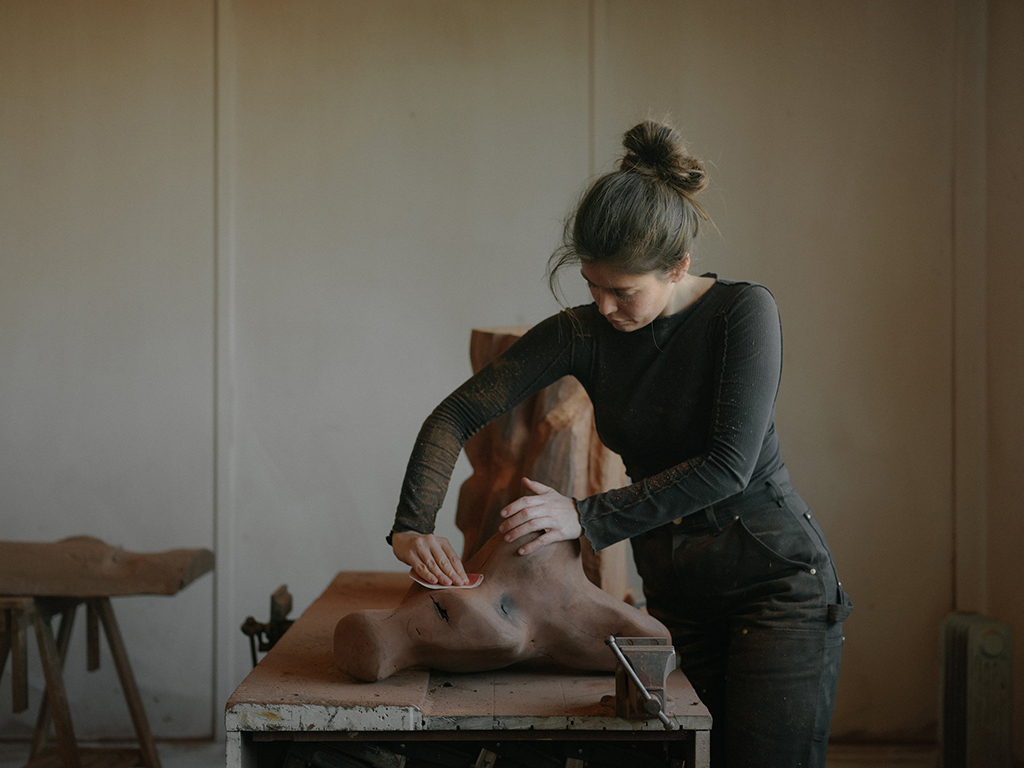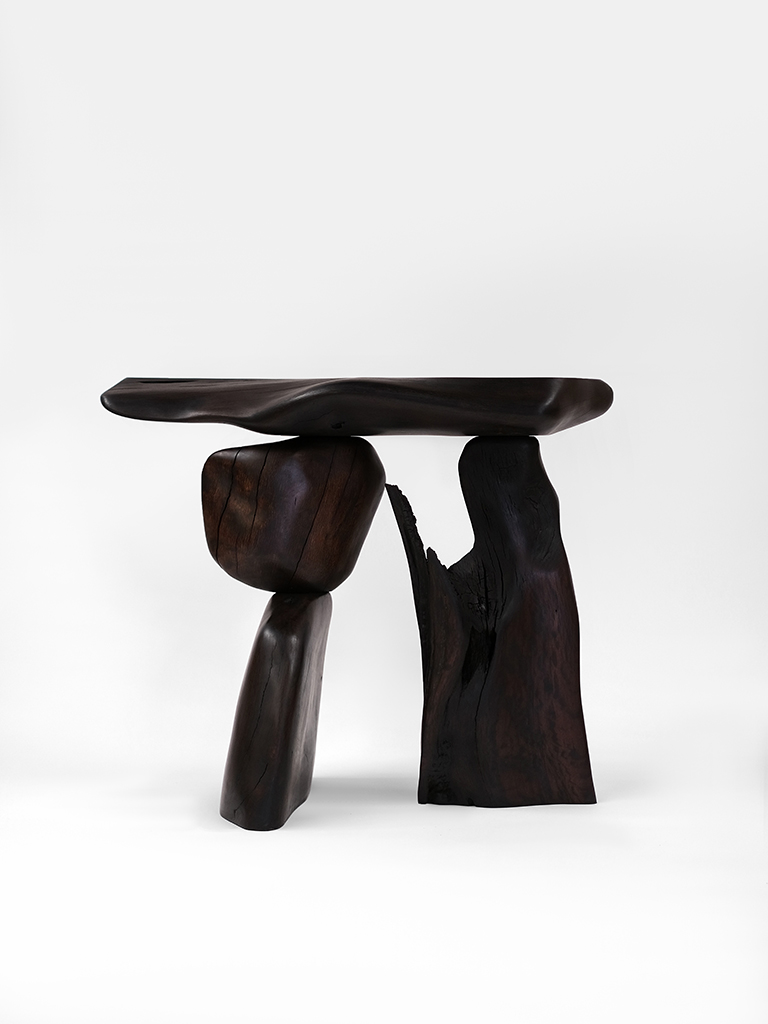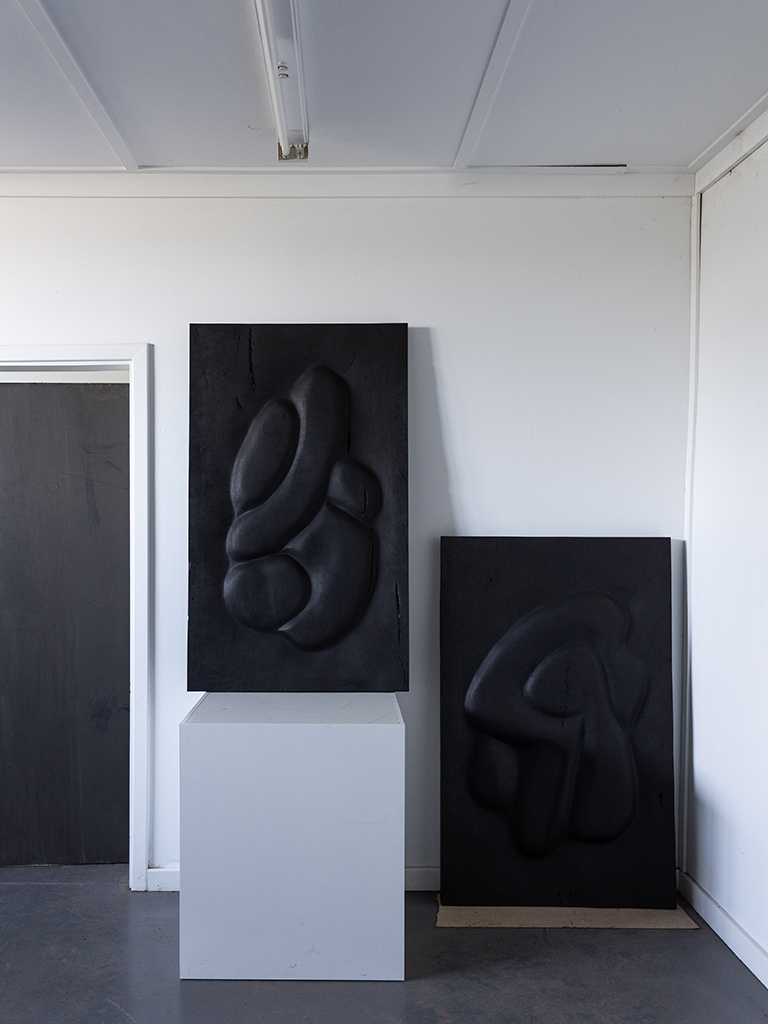Interview by Steve Dow
Perth-based multidisciplinary artist and designer Olive Gill-Hille shares the ethos behind her sculptures in wood.

STEVE DOW Your work transfigures wood into these sensual, supple-looking works of art, often referencing human forms. When did you fall in love with working with wood?
OLIVE GILL-HILLE It was during my second go at study, which was an associate degree of furniture design at RMIT [after a Bachelor of Fine Art specialising in sculpture at the Victorian College of the Arts]. I started working with wood five years ago. There’s something so warm about wood; it feels really connected to humans. It’s a very familiar material, something we all have memories of touching. I also love the transformative qualities of wood, especially the timbers that I use, which are gnarly and rugged. It’s pretty amazing that it can go from something from the earth and become such a refined and polished art object or design object in our homes.
SD There are no sharp edges visible in your work. How many hours of carving and sanding are required to achieve that result?
OG-H It’s a lot of hours. Sanding is the biggest part of the process; it takes a lot of sanding to get it to the finish that I want. There’s that ‘10,000 hours’ thing [the notion that ‘mastery’ can be achieved through 10,000 hours of practice]. I’m not there yet, but it’s probably not far off with the sanding and carving. It’s long days, and very physical work.
SD In the process of creating these often-feminine forms through your work, are you consciously embodying your own physicality and emotions?
OG-H Definitely. I love the work of artists such as Henry Moore and Hans Arp; these incredible sculptors whose work has been around for years but often possess this almost voyeuristic quality. Mine are [a form of] self-portraiture; they’re referencing my own body. I’m trying to replicate curves or forms I’m very familiar with because they’re my forms.
SD So your work is in dialogue with the modernist sculptures and responding to the male gaze of the likes of Moore and Arp, as well as Constantin Brâncuși and Isamu Noguchi?
OG-H For sure, I’m responding to the male gaze. It’s almost a taking back of those shapes. The work I do is so physical that it has often been a male dominated industry, so it is interesting for me to go into that realm, not just working in these sorts of shapes but also in these sorts of materials and trying to break that open; to feminise a male dominated industry.

SD You were born and raised in Perth before temporarily relocating to Melbourne to study. What childhood influences led you to become the artist and designer you are today?
OG-H I’ve always been around art and sculpture; it’s a big part of my family, but more painting. I still do paintings, watercolours and things, but I’m always thinking in a three-dimensional space. Even though I love painting, it just wasn’t my form. My dad was a painter, which is why I was always around art, and I was always encouraged to create every day.
SD Your sculptural process begins with you sketching and painting in watercolours to work things out. Take us through this process.
OG-H There are two different starting points for me. Sometimes, it starts with an idea; I’m responding to a theme or something that is topical in my life, whether that’s life or death or relationships. Sometimes I begin the process with sketches, planning and creating laminated works, which is more traditional woodworking. Other times, I find a particular piece of timber that really speaks to me, and work with that to create an art object.
SD Tell us about the timbers you work with.
OG-H At the moment, I’m working with Western Australian timbers because it really is about responding to landscape, responding to my site here [near Fremantle]. Sourcing the material is a big part of my practice and the narrative that goes along with personally sourcing the material from fallen trees, or ethically sourced timbers. Sometimes it’s a matter of going to farms, to properties where trees have been felled because of powerlines or because of safety concerns, and using that timber to make the work. Sometimes, I will work with imported timbers; it really depends on what I feel the work is about.
SD I imagine some strength is required to wrangle the wood—you must be quite physically strong?
OG-H I wish I could say yes [laughs]. I can endure a lot; it’s an endurance exercise. I have a block and chain that I use to lift things. I’ve also got very helpful friends who are probably getting a bit tired of being called up and asked to help move things. It’s a very physically demanding job but so much of me goes into each piece. I never outsource the work; I make most of it entirely from start to finish—that’s what makes the value. The hand of the artist is really critical to me, especially because I’m thinking about how personal [the works] are, and how responsive to my own experiences they are.


SD Your latest exhibition with Gallery Sally Dan-Cuthbert is titled Asymptote, a geometric term denoting a line that a curve approaches as it moves toward infinity but never meets. Can you tell us more about this theme?
OG-H For this show, I was thinking a lot about the moment before touch for two people who have had a courtship but haven’t actually touched yet; this idea of a precipice. On a larger scale, it’s about this moment before impact, when you never really know that you’re going to touch or if the impact is going to happen […it’s about that sense of] tension and anticipation. I was talking to friends and the word ‘asymptote’ came up. I’m not the most mathematically minded person, but just hearing what that meant, I realised that was what I was aiming for.
SD Your 2022 piece Nocturne, made of American black walnut, was a finalist in the Ramsay Prize and is on display at the Art Gallery of South Australia. You have said that the work emerged from a period of sleepless nights, during which your mind was racing and pulling in different directions. Is feeling stress conducive to making art?
OG-H I need to get work done in the next two weeks for my next show, and [the feeling of stress] doesn’t feel conducive right now! Nocturne was made during Covid, where there was a lot of uncertainty for everyone. As an artist you want to create works that resonate with people
SD The title Nocturne also evokes Chopin. Do you play music while you work?
OG-H I do play music. I can actually listen to the same song 15 times when I’m angle grinding [laughs]. I’m embarrassed to say, but ‘Believe’ by Cher comes on a bit. I do listen to classical music, that’s something I inherited from my dad. When I conceived of Nocturne, Dad had just passed away, so the piece references his love of music too.
Asymptote by Olive Gill-Hille is showing until November 5 at Gallery Sally Dan-Cuthbert in Rushcutters Bay.
